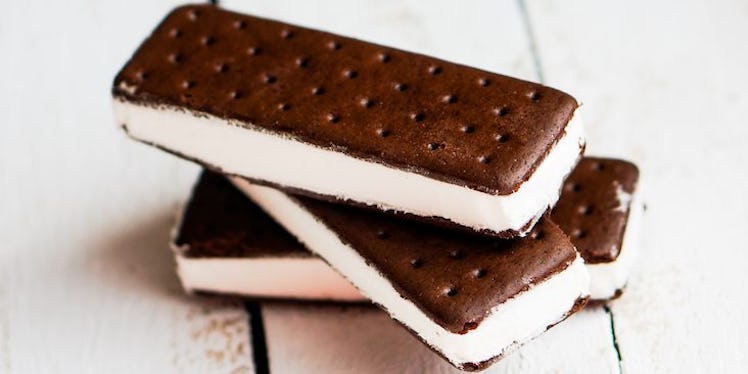
Ice Cream Sandwich Left In The Heat Won't Melt And The Internet Is Truly Baffled
In recent years, people have become a lot more conscious about what they eat. Some even make sure their favorite foods are actually safe for consumption by conducting a series of experiments on them. In the most recent installment of "what's in my fridge," an Australian woman claimed that her favorite Coles ice cream sandwiches do not melt in the heat.
A woman named Mary Selter took to Coles' (the company who makes the ice cream sandwiches in question) Facebook page and left a comment inquiring about the ingredients inside their frozen dessert.
Selter claimed that her grandson tossed a half of an ice cream bar onto the cement and the other piece landed on the lawn. She decided to leave the pieces in their respective places so that local animals can have a snack, but boy was she shocked when she noticed no living thing would go near it.
Selter also claimed the ice cream did not melt at all saying, "Ice cream has not melted and there the two pieces sit -- now I am a little concerned just WHAT is in this 'treat' -- can you please explain why after 4 days in 26 degree heat on cement it has not melted or nothing has volunteered to eat it." (26 degrees Celsius is about 79 degrees Fahrenheit.)
OK, this is just plain weird. An "ice cream" sandwich that won't melt, after four days in the piping hot sun? Something ain't right here and the Twitterverse has a few things to say about it.
"Someone should turn it into a horror flick."
"Ice cream should melt and if it doesn't, you shouldn't eat it. Real simple."
"Should've melted in 4 minutes"
Coles finally broke their silence and decided to reply to Selter via private message, BuzzFeed reports. They said,
Our ice cream sandwiches make use of very simple, commonly-used food techniques that help slow the melting process, and allows you to consume it without it falling apart in your hands. These techniques include adding thickener to the cream, creating a honeycomb-like structure which helps to slow the melting process. When the product starts to melt and liquid evaporates, you are left with what appears as foam.
Well, there you have it!